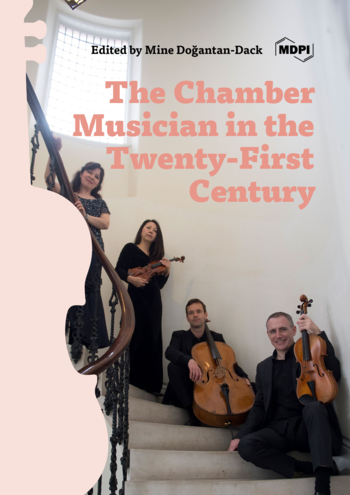Empowering the Portfolio Musician: Innovative Chamber Music Pedagogy for the 21st-Century Artist
The portfolio musician is not a 21st-century concept. Any history of music reveals numerous performers whose careers entailed multiple and various musical sources of income. However, 21st-century musicians are profoundly cognizant of the role conservatories play in their careers. They see themselves as multifaceted, socially conscious individuals, rather than technicians on a singular path to artistic success. Confronted by an oversaturated market and the immediacy of income required to pay exorbitant student loans, sole employment in an established organisation is less viable—and less desirable. Faced with these realities, 21st-century emerging professionals are prone to experiencing identity crises and often receive little assistance from their conservatory curriculums (SNAAP 2014). Calls are growing louder, however, for a radical rethinking of how musicians are educated in ways that are essential to 21st-century careers (Sarath et al., 2017). In this chapter, we amplify that call by investigating institutions that represent diverse approaches to chamber music education. We consider chamber music for its unique structure; most chamber music ensembles do not use a conductor and do not respond to an external artistic prompt. Consequently, chamber ensembles emphasize nonverbal, empathetic communication between musicians. They also operate on an increasingly independent basis; members occupy additional roles, serving as both business and artistic managers to successfully engage the public. Thus, chamber-music training provides a good case study for analyzing the changing social and economic landscape of the 21st-century music profession. Moreover, building on our analysis of educational modes used by institutions for training portfolio musicians, this research investigates what now constitutes chamber music. How does repertoire, personnel, venue, and listener–performer–composer agency define it? Additionally, how do or can conservatory curricula deliver such a new definition for their emerging professionals? This line of questioning serves the larger purpose of understanding the innovative role chamber music plays in contemporary collaborative music making and listening, responding to current hypotheses and discourses on the empathetic nature of music. We examine contemporary issues in chamber music pedagogy with a mixed-method approach. We survey faculty, students, and alumni of American and UK institutions to gather big data on the state of conservatory training. To nuance these data further, we conduct interviews with faculty, staff, and students in standout chamber music programs. Finally, we focus on innovative chamber music endeavors at our present institution, investigating the Chicago College of Performing Arts string chamber music program and the 1st-year professional training course.
